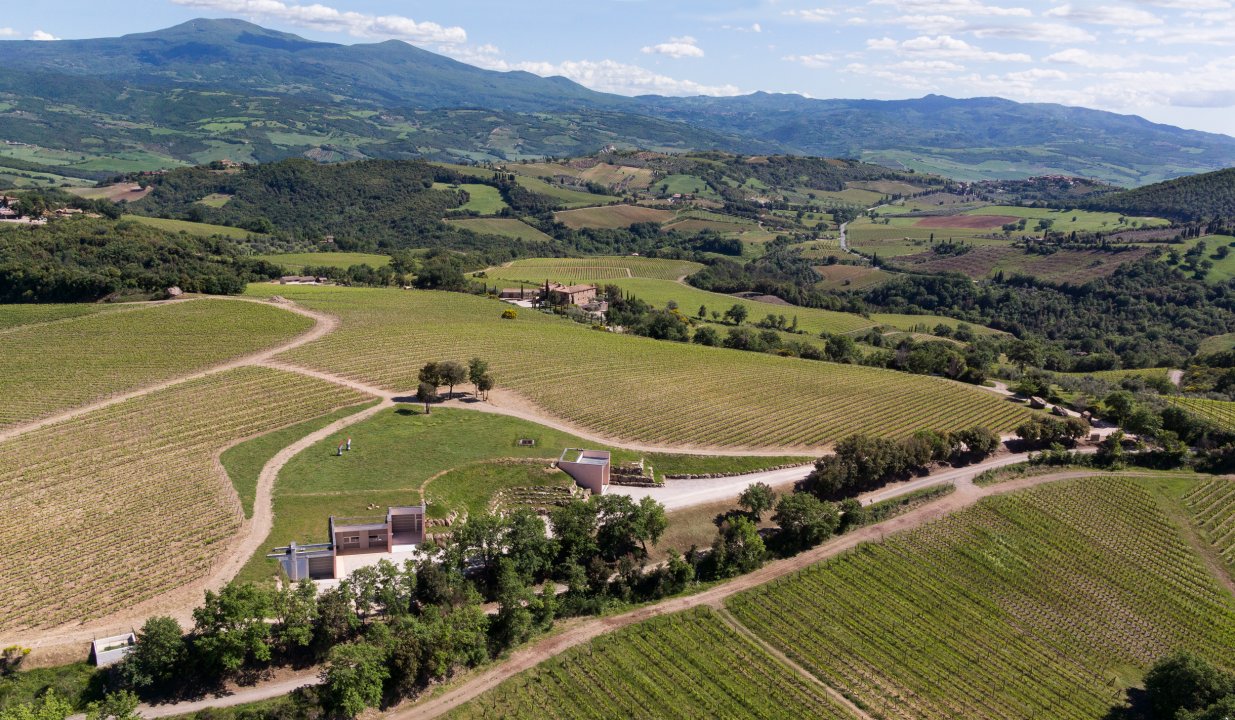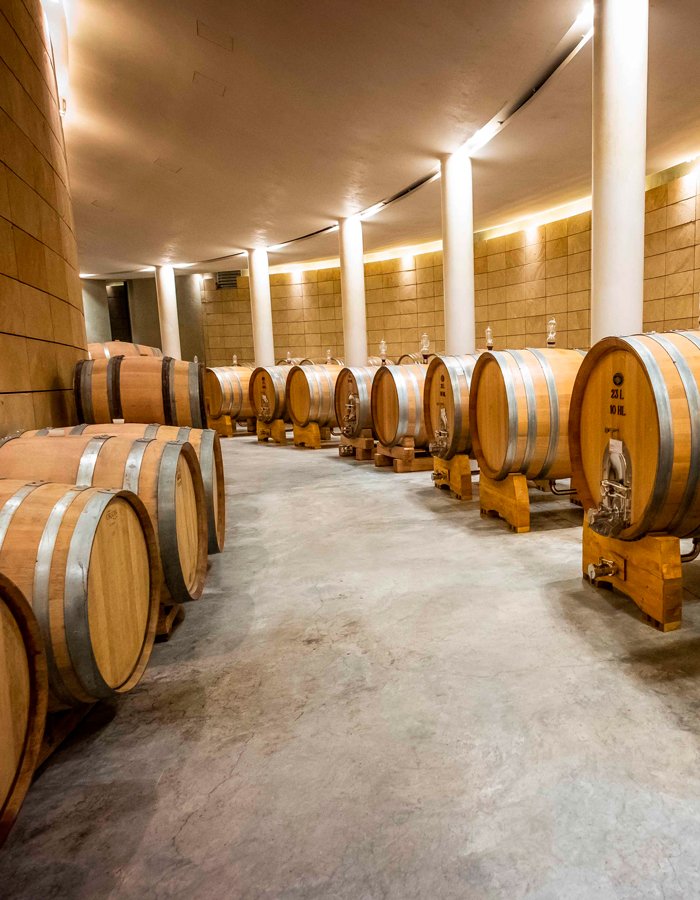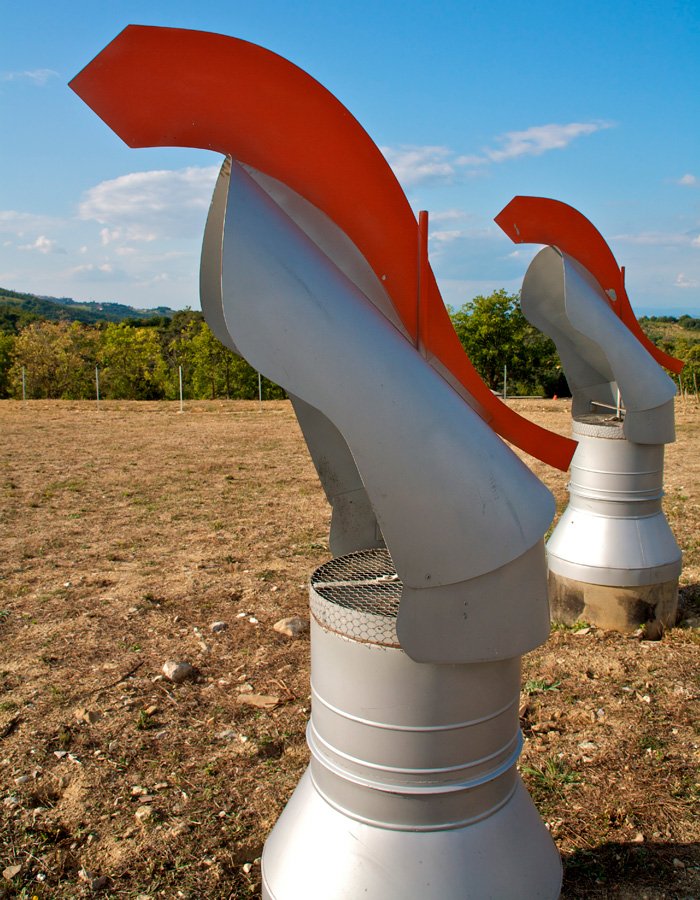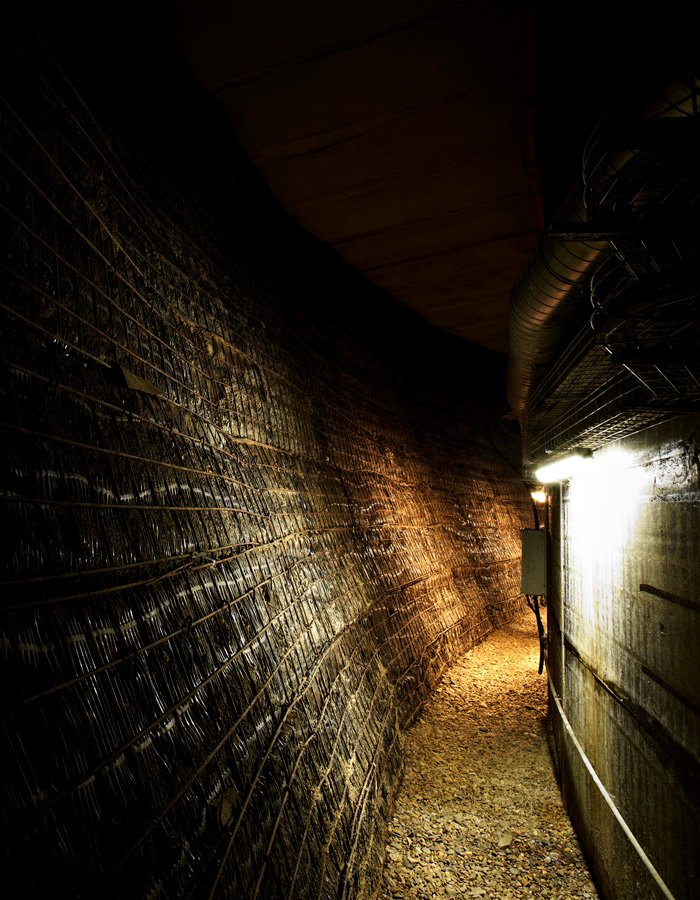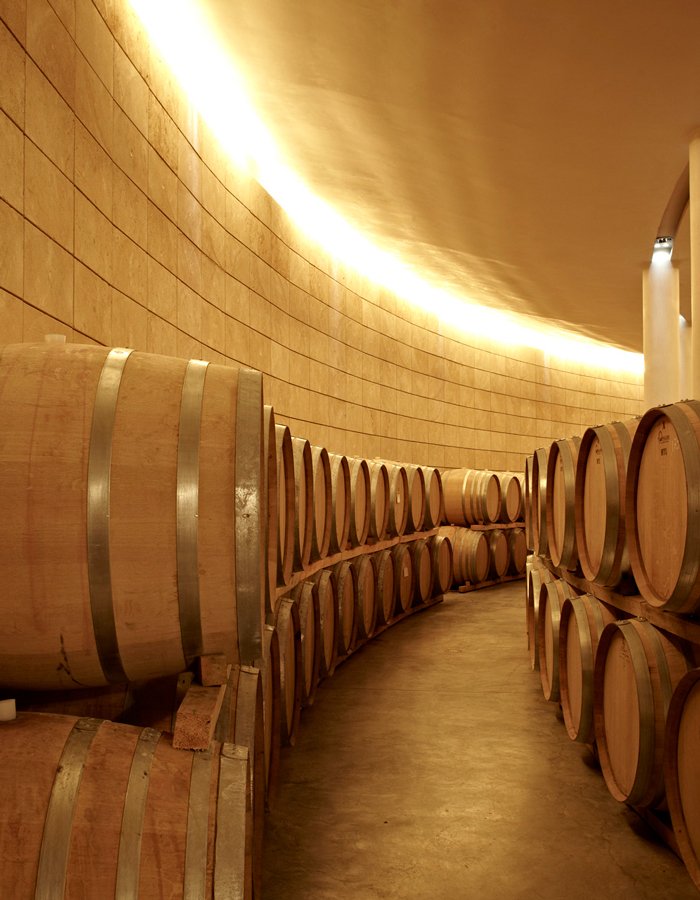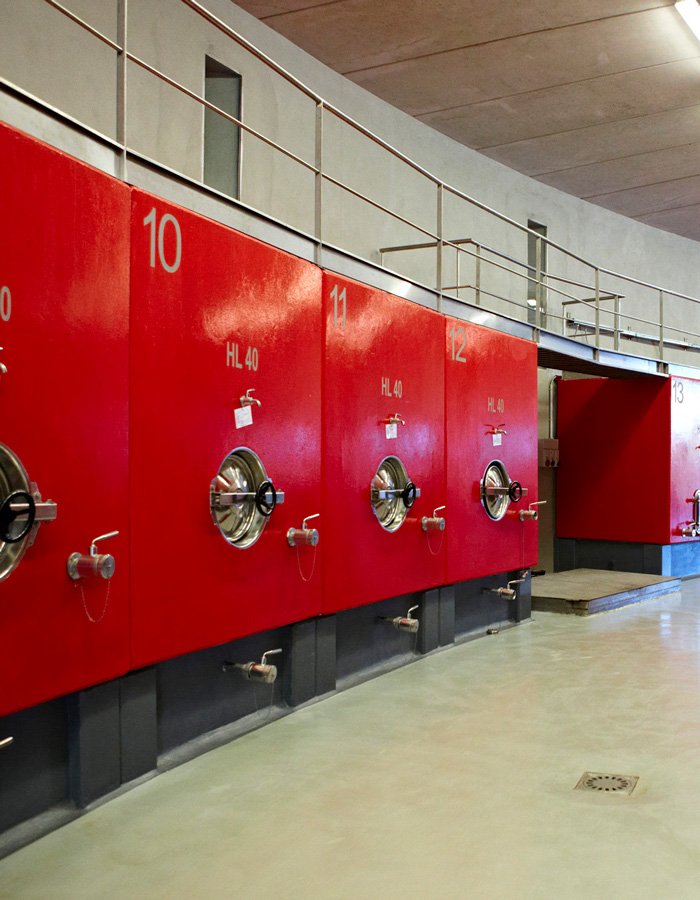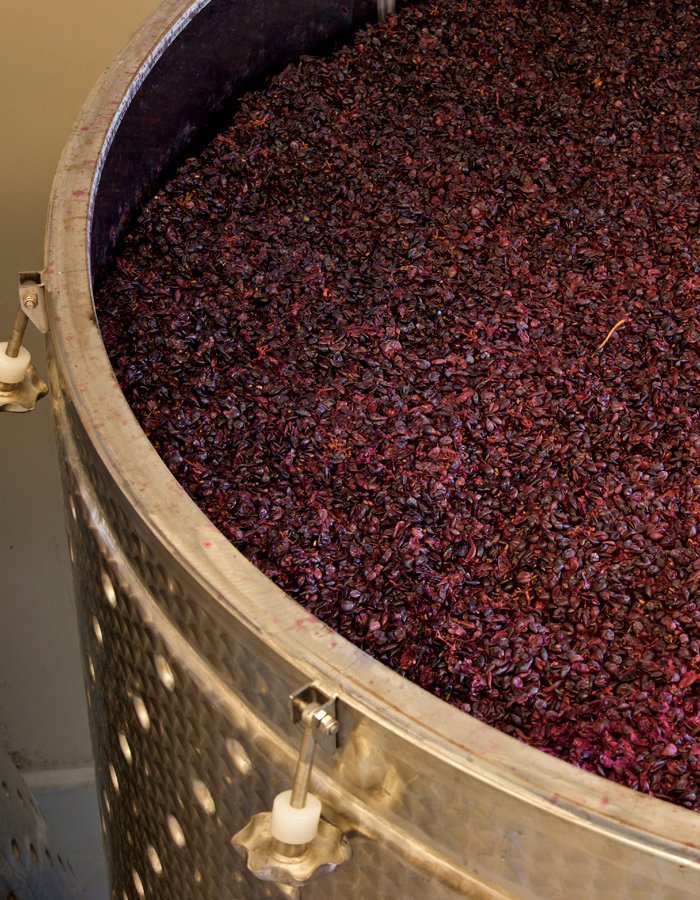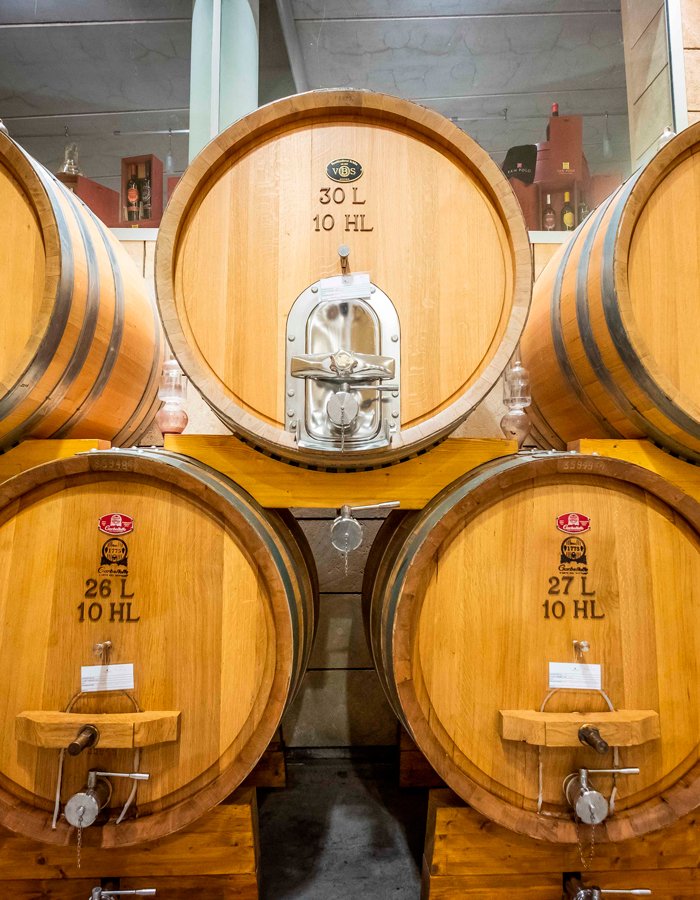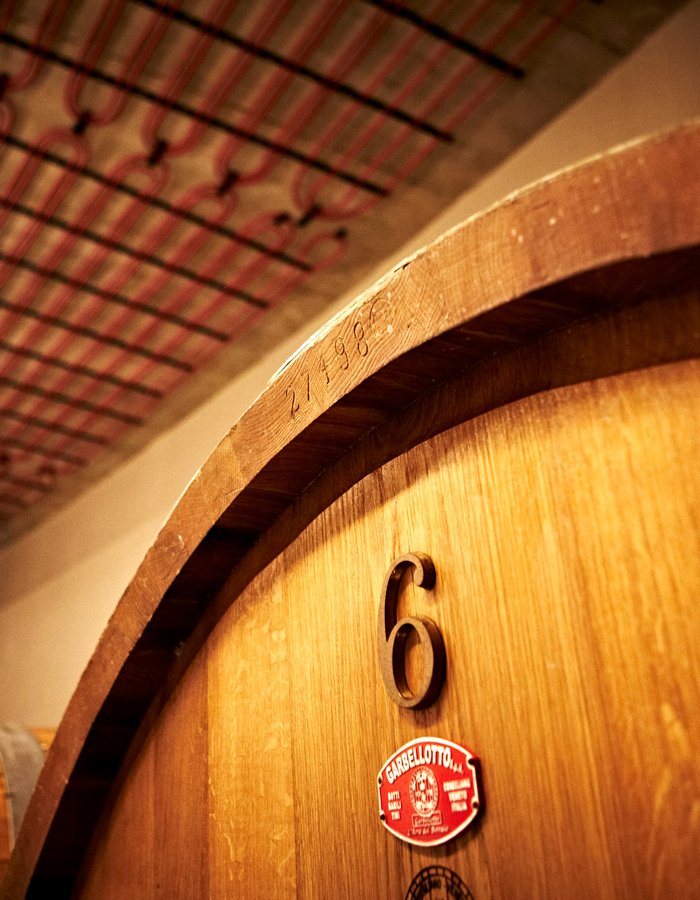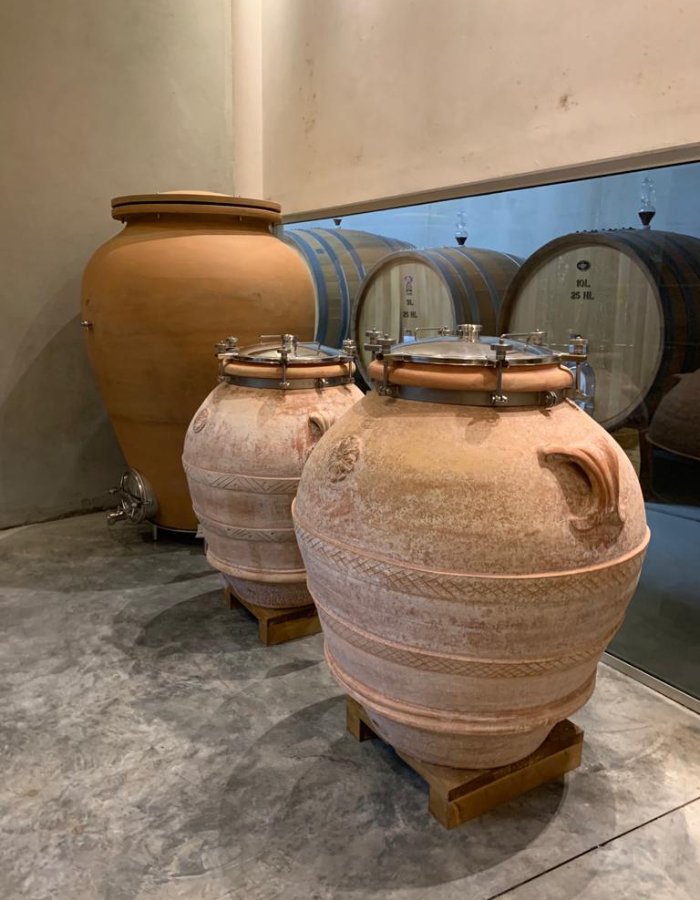Winery
Wine cellar of the future
“The idea of an eco-sustainable winery is an idea that is not only consistent with current times, but inevitably projected towards the future. It is something more: the link between generations. "
Marilisa Allegrini
There are wine cellars constructed to tell stories of the men and women who have been carrying out their work with determination and resilience for years. Wine cellars that speak to us about blessed vintages and others that were less productive. Then there is San Polo’s wine cellar which is all of this and much more. A wine cellar created with the desire to keep the passion that has been handed down for generations, but with an eye always looking towards the future. Inspired entirely by the principles of eco-sustainability and sustainable architecture, it completely blends in with the surrounding landscape.
Wine cellar
Virtual experience
The particular beauty of the landscape surrounding San Polo could not be tarnished by the construction of buildings that would compromise its natural harmony. We decided a virtual tour was an excellent way to explore the cellar, built according to the principles of sustainable architecture, and with the clever use of the earth’s generous natural resources.
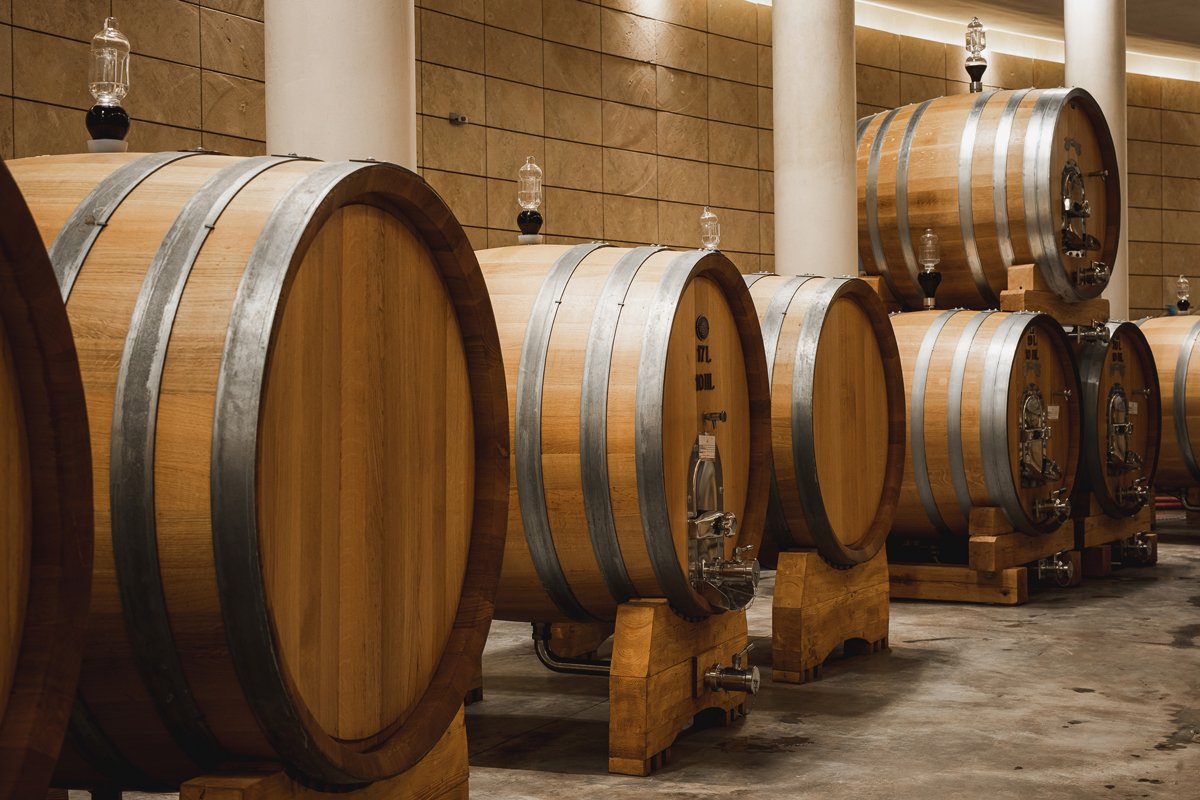
Bio architecture
Modern and functional, our cellar was built in synergy with nature. Sustainable architecture means knowing how to interpret, through innovative construction techniques, ways to cleverly take advantage of environmental resources. In fact, the building’s cooling process occurs in a completely natural way. In the ageing area, the convex shape of the suspended ceiling directs the air to the sides of the room, which facilitates contact with underlying coils where cold water flows, allowing for the subsequent cooling. The microcirculation created as a result of these convective motions promotes a healthy environment and prevents the formation of moulds.
